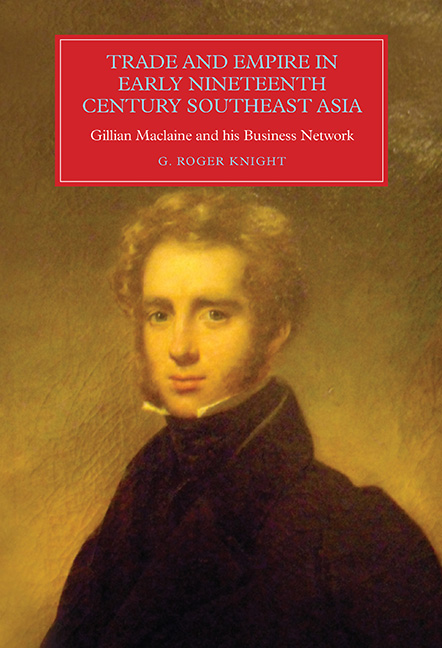 Trade and Empire in Early Nineteenth-Century Southeast Asia
Trade and Empire in Early Nineteenth-Century Southeast Asia We are interested in the way in which individuals and groups have created links to facilitate the movement of commodities, money, information and people across relatively long distances.
It is to this context that the present volume is addressed, in so far it relates to an individual – and the enduring mercantile firm that he helped found – whose career was enmeshed not only in maritime empire in Southeast Asia but also in some of the early nineteenth-century world's most dynamic commodity chains. As such, it constitutes a history of the nexus between a particular person and a complex and evolving commercial system that was both imperial and global. The focus is on the young émigré Scot Gillian Maclaine and his activities as a trainee in a London ‘East India’ mercantile house and subsequently in colonial trade and plantation in the erstwhile Netherlands Indies (present-day Indonesia) – and on the island of Java in particular – during the opening decades of the nineteenth century.
The book is more than a biography, however, since the story of Maclaine's activities as both merchant and planter intersects with key debates about the dynamics of Western imperialisms in Asia; the imperatives of commodity chains and the character of ‘diaspora’ commercial networks; and the associated – and problematic – nexus between colony and metropole. It is distinctive in that it essays an in-depth, ‘micro-level’ account of developments that are known to historians primarily on a broad ‘macro-level’. Some similar studies exist in relation to European mercantile activities in the Indian sub-continent and China during the nineteenth century. However, none have been essayed hitherto in relation to the Southeast Asian region in which Maclaine operated during the period with which the present study is concerned.
Maclaine was a major, yet a now virtually unknown, figure and the creator in the 1820s of a European mercantile network in Asia, centred on the Batavia (Jakarta) firm of Maclaine Watson, that long outlasted its founder. It became, over the century and a half of its existence, one of colonial Indonesia's key commodity traders and, as such, very heavily involved in the trade in sugar that constituted the single most valuable of the Java's exports and secured the Netherlands Indies a position at the apex of the huge international market for this form of sweetener. It was a formidable record, but a poorly documented one.
To save this book to your Kindle, first ensure [email protected] is added to your Approved Personal Document E-mail List under your Personal Document Settings on the Manage Your Content and Devices page of your Amazon account. Then enter the ‘name’ part of your Kindle email address below. Find out more about saving to your Kindle.
Note you can select to save to either the @free.kindle.com or @kindle.com variations. ‘@free.kindle.com’ emails are free but can only be saved to your device when it is connected to wi-fi. ‘@kindle.com’ emails can be delivered even when you are not connected to wi-fi, but note that service fees apply.
Find out more about the Kindle Personal Document Service.
To save content items to your account, please confirm that you agree to abide by our usage policies. If this is the first time you use this feature, you will be asked to authorise Cambridge Core to connect with your account. Find out more about saving content to Dropbox.
To save content items to your account, please confirm that you agree to abide by our usage policies. If this is the first time you use this feature, you will be asked to authorise Cambridge Core to connect with your account. Find out more about saving content to Google Drive.